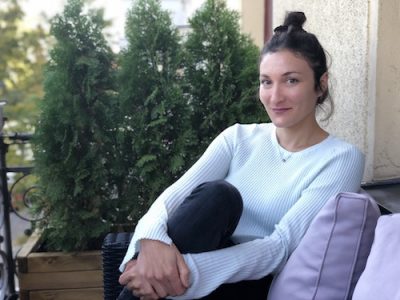“Sinners” Production Designer Hannah Beachler on Conjuring Ryan Coogler’s Supernatural Stunner
Warning: Contains spoilers
Ryan Coogler’s latest film, Sinners, made history with a second-weekend box office tally only six percent lower than its opening weekend. Just past its fourth weekend, it crossed the $200 million mark at the domestic box office. Both audiences and critics adore this Southern Gothic vampire thriller, starring Michael B. Jordan as identical twins Smoke and Stack. The pair has just returned to the Mississippi Delta after fighting in World War I and then getting involved with the Chicago mob, the details of which are mostly left to other characters’ conjecture. Looking to open a juke joint for the community that raised them, they sign on their cousin Sammie (Miles Caton), a pastor’s son and blues guitar virtuoso, and buy an old saw mill off a local landowner Hogwood (David Maldonado), who lies to the twins about his Klan membership, but Smoke and Stack learn this vital piece of information anyway, but from a different well of trouble: Remmick (Jack O’Connell), a vampire who comes knocking during the juke joint’s opening night.
Sinners is a horror movie, but it’s also so much more—a moody, atmospheric fantasy and period piece in one, which plumbs the history of the blues, hoodoo, and the Jim Crow South. The twins are inseparable, but distinct. Stack is a swaggering troublemaker with a pissed-off white-passing ex-girlfriend, Mary (Hailee Steinfeld) hot on his tail, but a melancholy hangs over Smoke. We begin to understand why when he visits his estranged wife, Annie (Wunmi Mosaku), at her little shop and abode in the woods. Outside, a fresh bottle of milk is set next to a tiny grave for the couple’s baby daughter.
As Smoke and Stack make their way through the Delta, culminating in the juke joint’s grand opening, production designer Hannah Beachler’s (Black Panther, Creed) exceptional structures, built from the ground up, define each location. At first glance, the spare, light church from whence the twins pluck Sammie couldn’t be more different from Bo (Yao) and Grace Chow’s (Li Jun Li) bustling grocery, but an aesthetic through line connects each of the locations for a historic, coherent sense of the Delta imbued with the fantastical. Beachler, who has worked with Coogler for twelve years on five of his films, has a shorthand with the director, but nevertheless, every project has its own challenges.
We got to speak with Beachler about her historic references, visual guidelines, and working Easter eggs into the sets for Sinners.
The settings are so integral to this story. How did you approach them as a whole?
They were all built entirely from scratch on location, so that was an awesome feat. The first three sets I designed were Annie’s, the church, and the saw mill. I assigned them colors of red, white, and blue. Ryan loves to assign colors to characters, which I run with. Jedediah [Saul Williams] was black, Smoke and Stack were red and blue, and you’ll notice that Mary and Annie have colors. On the outside of Annie’s, there’s a haint blue. I think ultimately, my favorites were the church, the farmhouse, and Annie’s. They each have their own personality, inspired by Dennis Gassner and Tim Burton’s Big Fish, which is very much about these small silhouettes of buildings, leaning and exaggerated in form.
Ryan had talked about Sergio Leone, and these big vistas, Stagecoach and Searchers. It was really about wanting to put these structures on these big horizons so they could stand out, because nothing was big. We didn’t have huge mansions outside of plantations, so the world was very small, and I wanted to keep it that way, but I wanted to exaggerate the shapes.
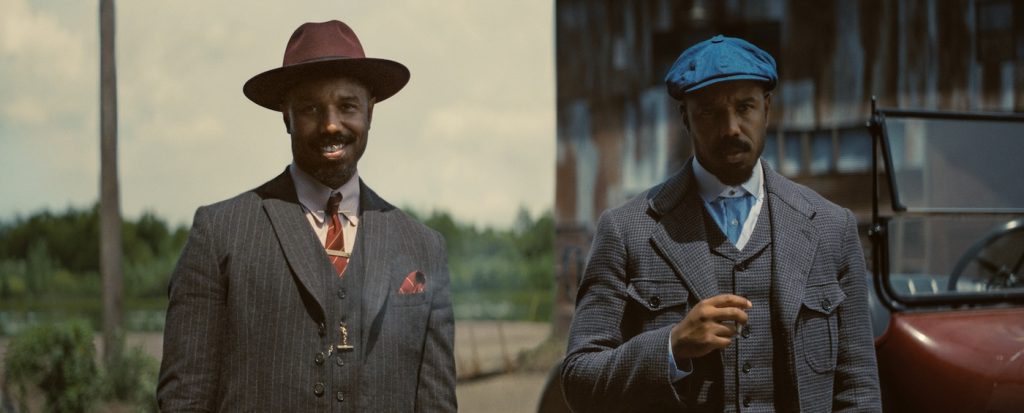
There’s a very strong coherence from location to location.
Sometimes I put a piece of a set into another set, trying to draw a line between church, spirituality which is Annie and the haint blue, and then red, which is blood and the capitalism of the juke joint and the free spirit there, and how all of those live in juxtaposition to one another. The farmhouse also has a lot of juxtaposition. You’ll notice things around Mary and Stack and Joan and Burt that are all sort of the same things, playing with lines. It was all intentional.
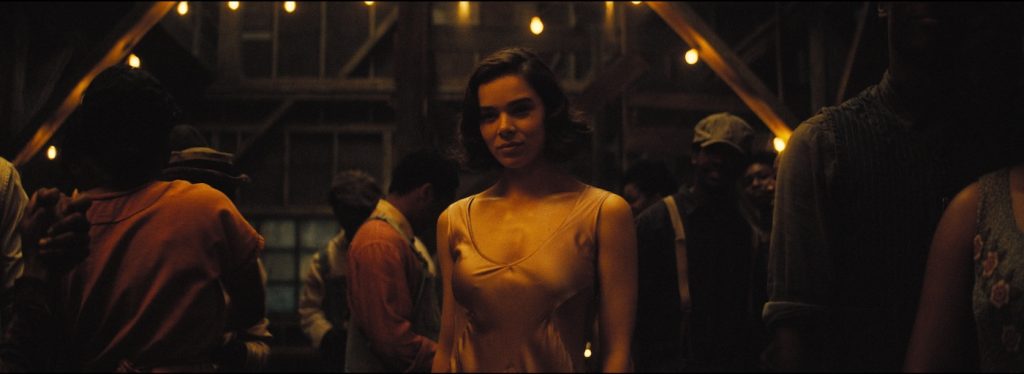
Annie’s abode is really special. What was your inspiration there?
When I started doing my research and digging into the photography of Eudora Welty, I saw a photograph of a woman from a sharecropper family standing outside her house. Her house is just leaning. And it struck me, there’s a huge pile of cotton on her porch. Cotton was king, and that’s what our story was about. [We put] piles of cotton everywhere. We wanted it on the road. You could see it as if it dripped out of the carriages. When Sammie walked through his neighborhood on the plantation, you saw people with it on their porch. There were images from the Library of Congress and the FSA, the Farm Services Administration, in Mississippi, Alabama, and Louisiana during the 1920s and 1930s that I used for inspiration as well. I went to Clarksdale and talked to older people about the town and what they remembered from their relatives and ancestors. All of those things were really important in building what was a truth that feels like fantasy.
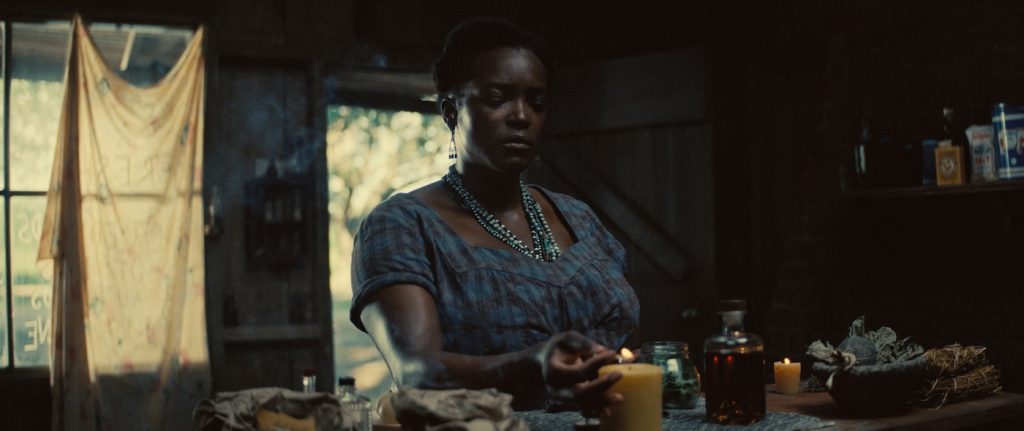
How did you create the barn-turned-juke joint? Was the lighting practical?
I knew I wanted to make it two stories, to tell the story that people lived there at one point. Of course, the kerosene lanterns were practical lighting, and then we had that moment when they jacked the electricity. Autumn [Durald Arkapaw, the cinematographer] really used that as a point of reference for the lighting she put in there. I love working with her. I can be as bold and crazy as I want, and she turns it into a beautiful piece of art. I was listening to a lot of Howlin’ Wolf and Smokestack Lightning, and we stopped where the equalizers stopped in the middle of the chorus. Then, we painted the levels of the equalizer of the song in rust on the back wall. We wanted to bring in the feeling that music is surrounding them. The big light Mary and Stack are in front of looks like a moon, and foreshadows what they become. And the juke joint is where everybody’s world collides, so I brought a little bit of everything [from other sets] into the structure.
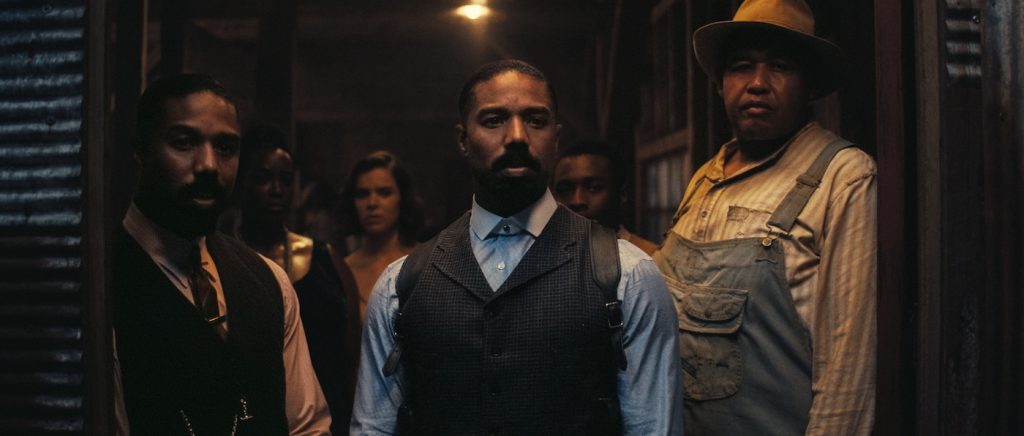
Did the doubling for Smoke and Stack affect your process at all?
Ryan always said, Don’t let that dictate what you’re doing. The twinning affected us just a little bit when we had to make sure backgrounds matched, but otherwise, we just went for it without worrying too much about that. One place we really did dive into the IMAX of it all was the church. When you’re at the doors of the church and Sammie walks in, I wanted to see rafters, and I wanted them to disappear at a certain point. So we had Autumn’s people out in Los Angeles measuring the height of the bottom of where our rafters sat, with where the IMAX would fall, and how far in we would lose that.

So much of the key action takes place at night. What did that mean for your process?
Put light on it so we can see it! It was wonderful because the way Autumn lit everything, we could utilize the atmosphere and really layer the forest on the location where we built the juke joint. I knew the way we shot it was going to be about capturing silhouettes, the dirt road, and considering how to bring the fog in. Concentrating on shapes and creating a mood in the background was fun.
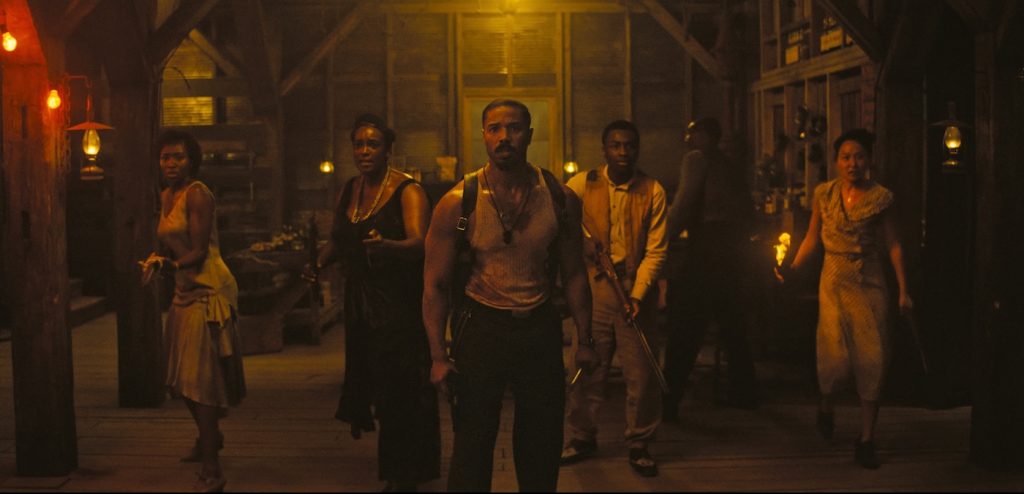
How was shooting in Louisiana?
I’ve been in New Orleans for about 22 years. I knew a lot of the crew and had worked with a lot of them in my early career. We’re right next to Mississippi, and certainly our weather is the same as the Delta. Northern Louisiana is cotton, and southern Louisiana is sugarcane. We were able to use the sugarcane fields when they were low to plant an acre here or there of cotton, and the rest would be tilled in. That was one of the reasons we needed New Orleans; outside of it lay those big landscapes you’re going to get in the Delta, the big sky, and that land forever. That was something Ryan really needed to tell the story of the wealth of that land and the poverty of the people who worked that land. I knew that we could get that [landscape] in Louisiana more so than in any other place.
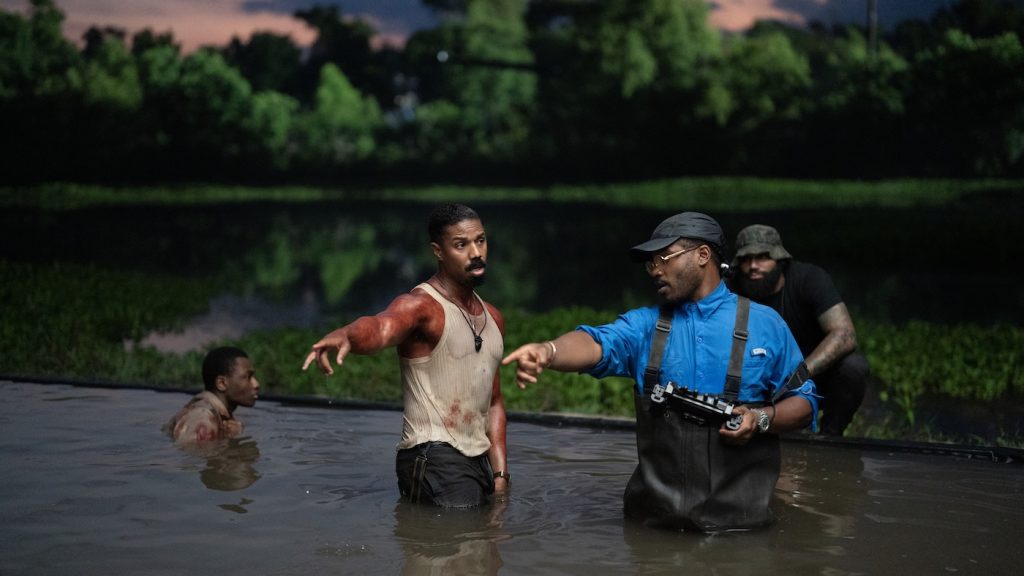
What were the locations outside New Orleans like?
We shot in Donaldsonville, which was hit hard by economic times, so it was pretty empty. We augmented and filled all of those buildings. Those grocery stores were from the ground up. Our set decorating department made labels for every can. We also had a lot of stuff in there that really spoke to that story of Mississippi and Bo and Grace and the Asian community, how they were able to serve both the white community and the Black community, and dealt with their own hardships as well. There are a lot of little tells on the windows of the grocery stores as to what that world meant. I was so proud we were able to put catfish frying on 70mm IMAX—you don’t see that every day.
The town’s main street had an incredible amount of detail.
I hope people keep seeing things every time they watch it. It’s both a thriller and a commentary on the time and what was happening in Mississippi during Prohibition and Jim Crow. After all these years, I’ve learned to trust how Ryan’s going to tell the story. Really, the best part was the collaboration and working outside of the big studio system we’d worked in previously. It was still a studio, but it was Ryan’s, and that made us free to stretch our own creativity. That’s one of the great things about working with an auteur like Ryan.
Sinners is in theaters now.
For more on Sinners, check out these stories:
Pinstripes and Blood Spatter: Costume Designer Ruth E. Carter on Making Dark Magic in “Sinners”
Featured image: Caption: MICHAEL B. JORDAN as Smoke in Warner Bros. Pictures’ “SINNERS,” a Warner Bros. Pictures release. Photo Credit: Courtesy Warner Bros. Pictures


